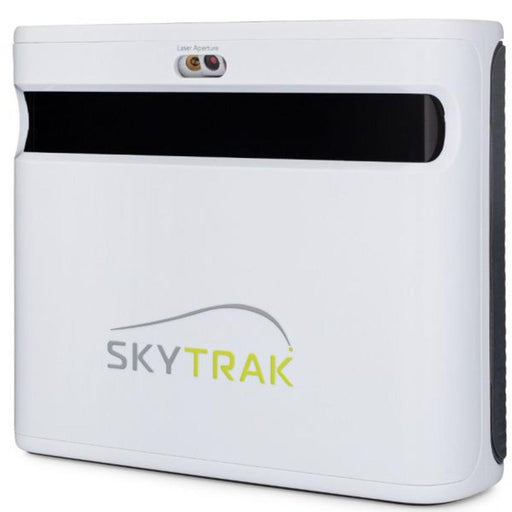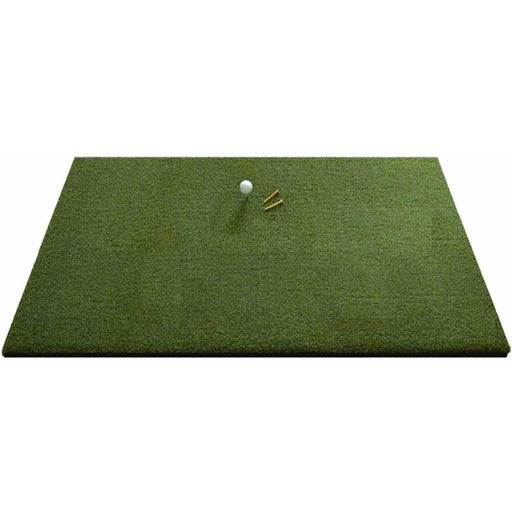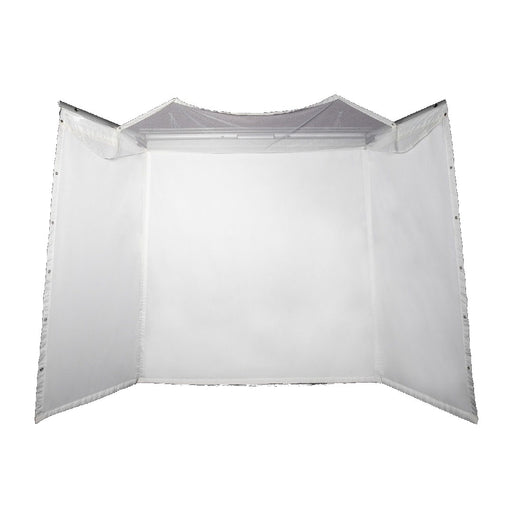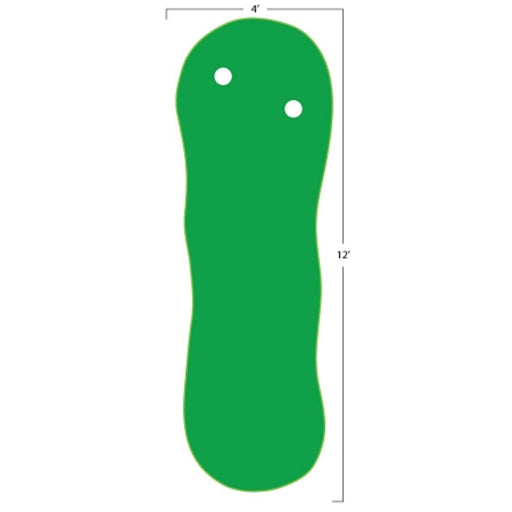
Navigating the Green Maze of Choosing the Right Surface for Your Home Putting Green
Close your eyes and envision a tranquil afternoon on a meticulously manicured golf course. The sun bathes the green in a warm glow, and you stand poised, putter in hand, ready to conquer the subtle undulations of the putting surface. Now, imagine bringing this serene scene to life right in your own home – a personal haven for refining your putting prowess. In this blog post, we embark on a journey through the green maze of choosing the right putting surface for your home, blending the art of storytelling with data-driven insights.
1. The Quest for the Perfect Putting Surface:
As you stand on the precipice of creating your home putting green, the first crucial decision awaits – the choice of the putting surface. This decision is not merely about aesthetics; it's a strategic move that can significantly impact your putting performance. Let the data guide you through this labyrinth of choices.
2. Natural Grass vs. Synthetic Turf: A Data-Driven Dilemma:
- Natural Grass Allure: The allure of natural grass is undeniable – the feel, the scent, the authenticity. Yet, data reveals that maintaining natural grass can be an intricate dance, with requirements for precise mowing, watering, and fertilizing. A study by the USGA notes that the ideal putting green requires specific conditions, and achieving them demands meticulous effort.
- Synthetic Turf Precision: On the synthetic side of the spectrum, advancements in turf technology have created surfaces that mimic the feel of natural grass. The reliability and consistency of synthetic turf offer statistical advantages. Studies, such as those conducted by the Synthetic Turf Council, indicate that high-quality synthetic surfaces can provide consistent ball roll and performance.
3. Stimp Meter Readings: Decoding the Speed of Success:
- Understanding Stimp Readings: The Stimp Meter, a tool invented by Edward S. Stimpson, measures the speed of a putting green. Data from the USGA suggests that professional golf tournaments often feature putting greens with Stimp Meter readings ranging from 10 to 12 feet. Understanding this metric can guide your choice, as the desired Stimp reading for your home green aligns with your skill level and preferences.
- Choosing the Right Speed: Whether you aspire for a fast-paced green that mirrors tournament conditions or a more moderate speed suitable for beginners, selecting the right putting surface is a nuanced decision. Synthetic turfs often provide consistent and customizable Stimp readings, ensuring your home green aligns with your performance goals.
4. Environmental Impact: Nurturing the Green Ecosystem:
- Water Conservation: The environmental impact of your home putting green is a consideration steeped in responsibility. Natural grass demands water, and lots of it. According to the EPA, outdoor water use can account for a significant portion of residential consumption. Opting for synthetic turf can be an eco-conscious choice, minimizing water usage while maintaining a lush green surface.
- Chemical-Free Bliss: Pesticides and fertilizers, common companions to natural grass maintenance, raise environmental concerns. The Synthetic Turf Council advocates for a chemical-free alternative, as high-quality synthetic turfs eliminate the need for harmful chemicals, creating a safer haven for both your family and the environment.
5. Durability: Crafting a Putting Legacy:
- The Wear and Tear Saga: Your home putting green is a canvas for your golfing dreams, and its longevity depends on the durability of the chosen surface. A USGA report highlights that natural grass greens endure wear and tear, necessitating regular maintenance. On the flip side, premium synthetic turfs are designed to withstand heavy use, retaining their performance and aesthetics over time.
- Investment That Lasts: Consider your home putting green as an investment in your golfing legacy. The data-backed durability of synthetic turfs ensures that your green remains a sanctuary for practice and play, season after season.
6. Cost Considerations: Navigating Budgets and Investments:
- Upfront Costs vs. Long-Term Value: The financial aspect of creating a home putting green is a pivotal factor. While natural grass may seem economical initially, the ongoing maintenance costs add up. A comprehensive study by HomeAdvisor estimates that the annual cost of maintaining a natural grass lawn can range from $300 to $2,000.
- Synthetic Turf: A Long-Term Affair: On the other hand, the upfront investment in high-quality synthetic turf may be higher, but it's a long-term affair. With minimal maintenance costs and a lifespan of 15 to 25 years, synthetic turfs prove to be a financially savvy choice over time.
Putting Perfection:
As you navigate the green maze of choosing the right putting surface for your home, let the amalgamation of storytelling and data be your guiding light. Whether you yearn for the authenticity of natural grass or seek the precision of synthetic turf, the key is to align your choice with your golfing aspirations, environmental values, and budget considerations. Your home putting green is not just a patch of grass; it's a canvas for crafting your golfing legacy – choose wisely, putt precisely, and let the statistics shape your journey to putting perfection.

Have Questions About Golf Simulators?
Our expert team is here to help you find the perfect golf simulator for your needs.
Featured products
-
SkyTrak+
Original price $2,995.00 - Original price $3,145.00Original price$2,995.00 - $3,145.00$2,995.00 - $3,145.00Current price $2,995.00Introducing the SkyTrak+ Launch Monitor: Unmatched Accuracy and Advanced Features Experience a new level of precision and innovation with the SkyTr...
View full details -
ProTee Majestic Simulator Package
Original price $9,618.00 - Original price $13,848.00Original price$9,618.00 - $13,848.00$9,618.00 - $13,848.00Current price $9,618.00ProTee Majestic Golf Simulator Package: Elevate Your Indoor Golf Experience Transform your home or business into a golfer’s dream with the ProTee M...
View full details -
Eagle Golf Mat
Original price $370.00 - Original price $1,130.00Original price $370.00$370.00$370.00 - $1,130.00Current price $370.00Introducing the Eagle Golf Mat: The Ultimate Golf Experience Are you passionate about golf and demand nothing but the very best in your practice eq...
View full details -
Retractable HomeCourse® Golf ProScreen 180
Original price $2,299.00Original price $2,299.00 - Original price $2,299.00Original price $2,299.00Current price $1,999.00$1,999.00 - $1,999.00Current price $1,999.00HomeCourse® Golf ProScreen 180 HomeCourse® Golf ProScreen 180 is a retractable golf screen and enclosure. HomeCourse® Golf ProScreen 180's ballisti...
View full details -
The Augusta V2 4'x12' 2 Cups
Original price $399.00Original price $399.00 - Original price $399.00Original price $399.00Current price $329.00$329.00 - $329.00Current price $329.00The Augusta is one of Big Moss’ traditional models. It offers unmatched versatility for teaching and year round practice. Make a long-term investme...
View full details





